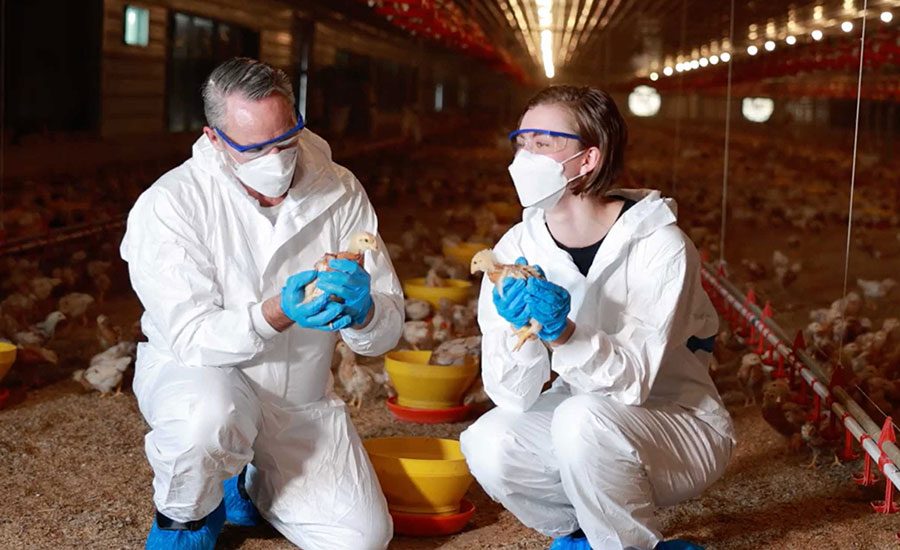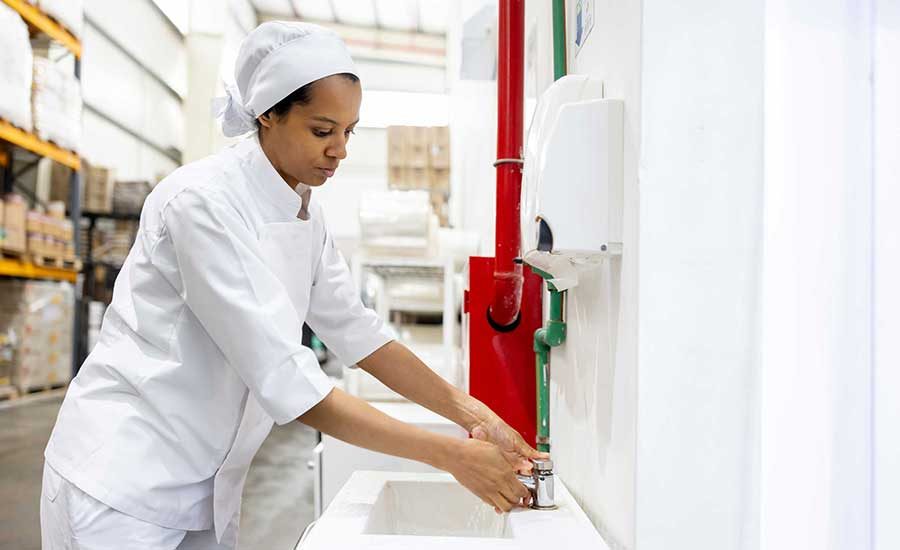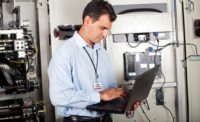Food Engineering recently held its annual Food Automation and Manufacturing (FA&M) show at the Naples Grande Resort in Naples, FL. Taking place just minutes from the beach, the conference and expo gave processors a chance to learn from each other and meet with suppliers, while also enjoying the sunshine and palm trees.
The speaker lineup offered a variety of industry experts, including:
- LiDestri Food and Drink’s Phil Viruso, vice president of manufacturing
- Innovation Focus, Inc.’s, Christopher W. Miller, PhD, founder of Innovation Focus, NPDP, past president of the Product Development and Management Association
- Smithfield Foods, Inc.’s Stewart T. Leeth, vice president of regulatory affairs and chief sustainability officer
- Land O'Lakes, Inc.’s Su Rankin, senior vice president of operations
- Lakeview Farms’ Todd Parker, plant engineer
- Kraft Foods’ Diane Wolf, former vice president, operations and engineering
- Land O'Frost’s Mike Bartikoski, senior vice president of operations
- Land O'Lakes, Inc.’s Mark Hanley, senior asset reliability manager
- LiDestri Food and Drink’s Stefani LiDestri, president and CMO
- General Mills’ Jim Tonjes, former vice president of engineering
- Sargento’s Karl Linck, vice president of engineering
- Plant of the Year Award Winner Abbott’s Jason Smith, integrated facility management lead North America, and Jay Smithberger, plant engineering & maintenance manager
- WhiteWave Foods’ (now owned by Danone) Deanna Bratter, director of corporate sustainability
- Sustainable Plant of the Year Award Winner Clif Bar & Company’s Jeb Sloan, engineering team
- Axium Foods’ Jerry Stokely, recently retired president
The following is a look at the top three trends that emerged throughout the conference sessions, and how food and beverages companies are responding to them, including: employee issues, software integration and sustainability.
1. Employees
One of the issues facing the food and beverage manufacturing industry is the almost inevitable robot revolution. However, many of the FA&M speakers emphasized that human employees are always going to be a key part of operations.
“I view the human component as an intrinsic piece of the equation,” says LiDestri’s Viruso. “We really have to give equal consideration to our employees.”
His session focused on how LiDestri stays competitive through its manufacturing plan and uses innovations to enhance its plants’ capabilities. But, even with all of his company’s technological advancements, there remains a strong focus on staff.
“The human part is key for us and part of that is empowerment of our employees,” he explains.
The food maker recently started using a computer program called RedZone that allows employees to chat with each other and log information for the plant.
“For me, the most exciting part of this is the chat function,” Viruso says. “That’s a huge win, where we have people chatting from one part of the floor to another, and it’s becoming a real team environment.”
The company also partners with HR on the soft sciences.
“We spend a lot of time with training programs, looking at ways to get our employees engaged,” he says. “We look at training our people on how to talk to one another. It sounds simple, but it’s not always so simple.”
And, he says, the goal is to develop a more sophisticated workforce.
“All of these tools … they all require a more skilled worker,” Viruso says. “We really are looking to ideally reduce the number of employees for a given process. But a higher paid employee… overall, it’s a positive because we’ll have a more engaged, more educated workforce. That’s our end goal.”
During her speech, Land O’Lakes’ Rankin provided insights into integrating varying human perspectives and processes, illustrated by lessons derived from a major renovation at one of Land O’Lakes, Inc.’s premier cheese plants.
She says the company dramatically involved the workforce in the renovations and the planning, which included redesigning the milk receiving bay. Because of employee suggestions, the company decided to make the bay automated and covered, so drivers can get in and out quickly to avoid any harsh Wisconsin weather conditions.
Sargento’s Linck, who spoke about site selection, says it’s impossible to ignore labor issues when picking a new location, starting with how long it will take your employees to get to work.
“[You have to consider] the people when they get there. You don’t want to have their commute to work [to] be ridiculous,” he explains. “As a general rule … salaried professionals will move for a job; technicians and hourly workers generally don’t.” That’s where automation can help companies that might be facing a shrinking workforce.
For example, Sargento recently automated its palletizing system, but nobody was laid off. Instead, the affected employees were assigned different tasks.
“The old paradigm: Robots take away jobs. The new paradigm: Robots create company growth and better jobs,” he says. “Most of the jobs that robots can do—I don’t know a lot of people who want to do them … and really, we need those people to do other things.”
During the Ask the Expert panel at FA&M, Kraft’s Wolf moderated a discussion on plant workers using advanced automation; Land O'Lakes, Inc.’s Hanley, LiDestri’s LiDestri and Land O'Frost’s Mike Bartikoski offered insights into employee-related issues.
“People are where your investments should be,”Hanley says. “The plants print the money; we’re just here to help. You’ve got remember that and put the emphasis on [the people].”
Everyone seems to agree that manufacturing has an image problem, especially with the younger generation.
“There is such opportunity in developing a better link with our young people … who think manufacturing is not sexy. It’s not a career path that a lot of our high school kids are considering for themselves,” Hanley explains.
He says his company works with high schools, community colleges and four-year colleges to recruit potential employees and create training programs. Bartikoski agrees that the sector faces an image issue.
“It isn’t sexy, but it’s exciting. It can be,” he explains. “It’s getting them to understand what actually happens. It’s almost like ballet: It’s an orchestrating assembly of everything. Getting them in the door is the hard part.” LiDestri says her company has recently put a focus on videos.
“We have really made a concerted effort to build videos and use videos in our messaging. [Young people], they’re visual,” she explains. “We’ve built a YouTube channel for LiDestri food and drink and … some of those videos are used at career day functions.” The panel also touched on how possible immigration policy changes could impact food and beverage manufacturing.
“For us, there’s impact right away,” Bartikoski says. “We have a very active and robust program, and one of our interns was a foreign national … and it got to the point that their travel home would be a concern that they would go home and wouldn’t be able to come back.”
He also says US Immigration and Customs Enforcement has been coming into the company’s factories and checking work credentials, but even if they found workers in the country illegally, they didn’t always deport them. So, the end result was really just that they were out of a job. Hanley says his company also has had issues.
“I’ve seen where people have been pulled out of the plant because of their ethnicity,” he explains. “It’s getting tough, and it will get tougher.”
2. Software integration

Once you get the employees you need, then the goal is to keep them. And when it comes to having software on the plant floor, employees and plant managers are starting to expect a certain level of technology at work, according to Innovation Focus, Inc.’s Miller.
“If I can see my granddaughter playing online using an iPad, why can’t I watch every aspect of my tools when I’m on vacation?” he asks. “I shouldn’t have to walk down there to see what’s going on.”
LiDestri’s use of RedZone did dramatically change operations for that company. It allowed LiDestri to create simulations of various improvements and find the best ways to become more efficient. And the solutions surprised some people.
“I was most surprised about how changing the control point of flow and where we buffer … how the series and sequencing of that was dramatic on its impact to stoppages on the line,” Viruso says. “Just playing with the control points, for me, it was profound.”
He adds that the $150,000 software helped the company avoid more than $5 million capital expenses.
“This simulation here could have possibly saved my job,” Viruso explains. “If I didn’t question what my staff was imputing to me, and I would have just approved a multimillion project, put it in and then realized it really didn’t give the desired results, I really wouldn’t have been looking so good.”
However, RedZone stores data on a cloud, and that, of course, raises security concerns. He says the company vetted the program and concedes, “That’s just a risk of today’s world.”
Lakeview Farms’ Parker talked about integrating technology into the factory during his speech, which focused on how to apply the Internet of Things now and get actionable data.
His company recently integrated a mobile, cloud-based system that is bilingual, works with smartphones and has helped create huge productivity gains.
The program encouraged employees to compete with teams on other shifts and allowed them to see how other shifts were doing, even when they weren’t on the clock, which led to a competitive culture that increased productivity.
“If they check the data when they aren’t at work, even if they’re just looking to see how the other team is doing, that means they’re vested in your company, and that was my goal,” Parker explains.
Specifically, the company saw a 34 percent uptime improvement in the first year and saw efficiency rates increase to over 78 percent, up from 50 percent. Overtime hours in the maintenance department had been over 30 percent, and now, they are under 10 percent. That was due to, in part, better tracking of spare parts and potential mechanical problems.
“My spare parts alone paid for all the data tracking,” Parker says.
The software also means the company now has real-time LCD screens throughout the plant and can focus on the real-time information. The new software did require the company to shift how it views smartphones and tablets on the plant floor.
“We went from, ‘keep your phones in your pockets’ … to where half the plant has a device in their hands,” he says. “It’s gathering data for us.” And, he adds, that while they admit some employees probably do abuse the policy, the upside to them gathering the data outweighs that.
3. Sustainability

Consumers and companies both seem to understand what sustainability is these days, but how exactly a company implements sustainability practices can be both confusing and overwhelming.
Smithfield Foods’ Leeth delved into the growing importance of traceability, transparency and creating a more sustainable supply chain during his session. His company, which manufactures pork products, really focused on the farm level. And the changes it made weren’t easy, as many of its products come from farms that are not company owned.
To start, the company focused on its own farms and now reports all the antibiotics it uses on the animals.
“There’s a lot of distrust in the use of prevention,” Leeth explains. “We try to explain why we use antibiotics and give hard examples.”
Smithfield also made a commitment to convert all company-owned farms into having group housing structures for pregnant sows.
“We made a sea change in the way we manage pregnant sows,” he says. “And it was a $360 million investment. We did it because our customers want it. We say there’s no difference. [But] if you go into a farm, you see this [change], and it sort of gives you a feeling of this is better. I think this is a trend that’s going to continue.”
Of course, it’s a lot easier to deal with these types of issues on company-owned farms.
“A lot of Smithfield’s animals come from contract owners, which are family farmers,” Leeth says. “That’s about a quarter of our supply, and then, we also buy wholly independent animals. It’s a difficult thing, because we don’t own or operate any of those operations.”
However, Smithfield does work to create incentives for growers, such as longer-term contracts if they make changes on the farm.
Transparency also is critical for Smithfield, which works with its communications team to get the message out to consumers about what they are doing.
“The technology that goes into … food safety has to be explained in very simple terms,” Leeth says. “If you explain why you do it and how you do it and how it affects food safety, it’s a good thing.”
Clif Bar’s Sloan also addressed sustainability, and he knows what he’s talking about. His company’s factory in Twin Falls, ID was this year’s Sustainable Plant of the Year Award winner.
The factory, which has three production lines, is designed to LEED standards, features 100 percent LED lighting inside and out and provides 290 living wage jobs.
The building design has a strong focus on what Clif Bar calls “biophilia,” which is the concept of incorporating nature into a built environment to decrease stress, while enhancing creativity and enhancing mood.
“The break area offers tons of exposure to natural light, so employees can see snowcapped mountains throughout the day,” he says. “We designed our break space so that it enables our team members to truly disengage. What we wanted to do was provide couches and these refuge pods and truly offer a really relaxing environment.”
There are also natural light and views inside the bakery.
WhiteWave Foods’ Bratter also focused on sustainability in her speech, specifically on how to best align supply chain operations and company culture with sustainable food production.
“There are small things that we can do to get started on this journey of sustainability, and there are potentially some really big ways we can impact our outcomes,” she says. “There was a term ‘green washing.’ It’s not really prevalent anymore, because the big companies have gotten the hint: You can’t talk about sustainability if you’re not really doing the work. You need to be transparent.”
One of the things WhiteWave focuses on is cocoa sustainability. Although it only buys a relatively small amount of cocoa compared to bigger players in the sector, WhiteWave felt it was an important issue. So now, all of the company’s cocoa is UTZ Certified.
The company also focuses on water reuse, and 55 percent of water consumed by one of its plant’s cooling towers is now reused. And the company also publishes sustainability reports in an effort to be transparent.
“Sustainability is not about the destination,” Bratter says. “It’s a really rocky road and making sure you’ve got a solid pit crew and making sure you’ve got a champion … despite the peaks and the valleys along the way.”
Good advice for sustainability, and all the challenges facing manufacturing.
Make sure you join Food Engineering for next year’s show April 22-25, 2018 at the Hyatt Regency Coconut Point Resort & Spa in Bonita Springs, FL.
For more information and to watch videos of many of the speeches from this year’s show, visit www.foodautomationconference.com.
This article was originally posted on www.foodengineeringmag.com.








